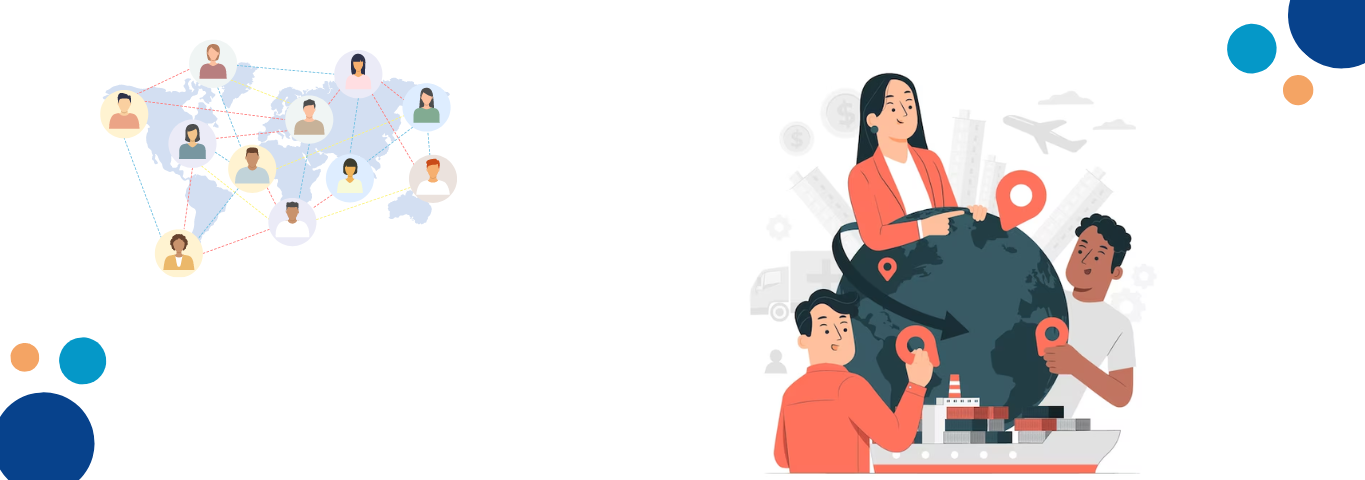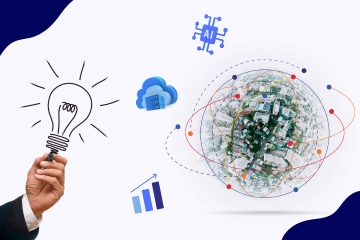In the ever-changing landscape of the 21st century, one term that has garnered immense attention and discussion is "Globalization." This phenomenon has transformed how nations, businesses, and individuals interact, reshaping the world into a more interconnected and interdependent entity. In this SEO-optimized blog, we will delve into the concept of globalization, its phases, elements, types, and present-day examples, while also examining the pros and cons it brings to the table in the year 2023.
What is globalization and its purpose?
Globalization is the process of increased interdependence and interconnectedness among countries, societies, and economies worldwide. It aims to facilitate the seamless exchange of goods, services, technology, and ideas across borders, transcending geographical and cultural boundaries. The primary purpose of globalization is to foster collaboration, improve economic efficiency, and promote cultural exchange, ultimately aiming for a more integrated and cooperative global community.
What are the pros and cons of globalization?
Pros:
- Economic Growth: Globalization opens up new markets and opportunities for businesses, leading to increased economic growth and job creation.
- Access to Resources: Nations can access resources, capital, and expertise from other parts of the world, enhancing their development prospects.
- Cultural Exchange: Globalization enables cultural diffusion, promoting tolerance, understanding, and appreciation of diverse traditions and customs.
- Technological Advancements: The exchange of technology across borders accelerates innovation and scientific progress.
- Poverty Reduction: Developing countries can benefit from globalization by attracting foreign investments and improving living standards.
Cons:
- Income Inequality: Globalization may exacerbate income disparities within and between countries, leading to social and economic imbalances.
- Loss of Cultural Identity: As cultures intermingle, there is a risk of homogenization and the loss of unique cultural identities.
- Environmental Concerns: Increased global trade and transportation contribute to environmental challenges like pollution and climate change.
- Labor Exploitation: Some companies may exploit cheap labor in developing countries, leading to poor working conditions and labor rights abuses.
- Vulnerability to Economic Crises: The interconnectivity of global economies can spread financial crises across borders.
The 4 Phases of Globalization
a. Pre-Modern Globalization (1400-1800): This phase was characterized by exploration and trade routes, such as the Silk Road, connecting various civilizations and enabling the exchange of goods and ideas.
b. Early Modern Globalization (1800-1945): The advent of industrialization and colonialism led to increased international trade, with European powers dominating global affairs.
c. Post-World War II (1945-1980): This phase witnessed the establishment of international organizations like the United Nations and a push for global economic cooperation and development.
d. Modern Globalization (1980-present): The contemporary phase of globalization is marked by rapid advancements in technology, telecommunications, and the liberalization of trade, finance, and investment.
The 5 Elements of Globalization
a. Trade Globalization: The exchange of goods and services across borders, facilitated by reduced trade barriers and free trade agreements.
b. Financial Globalization: The integration of financial markets and investment opportunities worldwide.
c. Technological Globalization: The widespread dissemination of technology and information across the globe.
d. Cultural Globalization: The sharing of cultural products, values, and ideas, leading to a globalized popular culture.
e. Political Globalization: The collaboration and coordination of governments and international organizations on global issues.
The 7 Major Types of Globalization
a. Economic Globalization: Focused on expanding economic activities beyond national borders, involving trade, investment, and the movement of capital.
b. Social Globalization: Concerned with the integration of societies through cultural exchange, migration, and communication.
c. Political Globalization: Refers to the increasing cooperation among governments and international organizations to address global challenges.
d. Environmental Globalization: Deals with environmental issues transcending national boundaries, requiring global cooperation for effective solutions.
e. Technological Globalization: Involves the dissemination of technology and innovations worldwide, revolutionizing various industries and communication.
f. Informational Globalization: Relates to the global flow of information and knowledge through media and the internet.
g. Judicial Globalization: Centers on harmonizing legal systems and international law to address cross-border legal issues.
Examples of Globalization in 2023
a. E-commerce and Digital Services: Online shopping and digital services have connected consumers and businesses worldwide, fostering a global marketplace.
b. International Supply Chains: Manufacturing industries rely on complex international supply chains, where components are sourced from multiple countries.
c. Cultural Fusion: The popularity of global entertainment, music, and cuisine reflects cultural fusion and appreciation of diversity.
d. International Financial Markets: Investors can trade and invest in global financial markets, impacting economies worldwide.
e. Climate Agreements: Countries collaborate to address climate change through agreements like the Paris Agreement, emphasizing the global nature of environmental challenges.
Future Outlook of Globalization Examples
Some experts believe that globalization will keep growing due to technological advancements and economic interdependence. They contend that the benefits of globalization—which include excellent living standards and faster economic growth—are numerous and are likely to last.
However, there are also many challenges, including rising inequality, environmental degradation, and political instability. Some experts predict these challenges could lead to a backlash, with countries turning inward and adopting more protectionist policies. Moreover, the COVID-19 epidemic has also brought attention to the weaknesses of global interconnection by disrupting supply chains and travel worldwide. According to some experts, this could result in greater regionalization and localization as nations strive to lessen their reliance on overseas commerce and investment.
Overall, it is difficult to predict the future; there may be a rise or a retreat to this global interconnectedness. It all depends on various social, economic, and political factors.
Conclusion
Globalization continues to shape our world differently, influencing economies, cultures, and societies. As we stand in 2023, the impact of globalization is evident in every aspect of our lives, and understanding its multifaceted nature helps us navigate the challenges and harness the opportunities it presents. Embracing globalization while addressing its drawbacks is critical to building a more inclusive, sustainable, and interconnected global community.






Comments